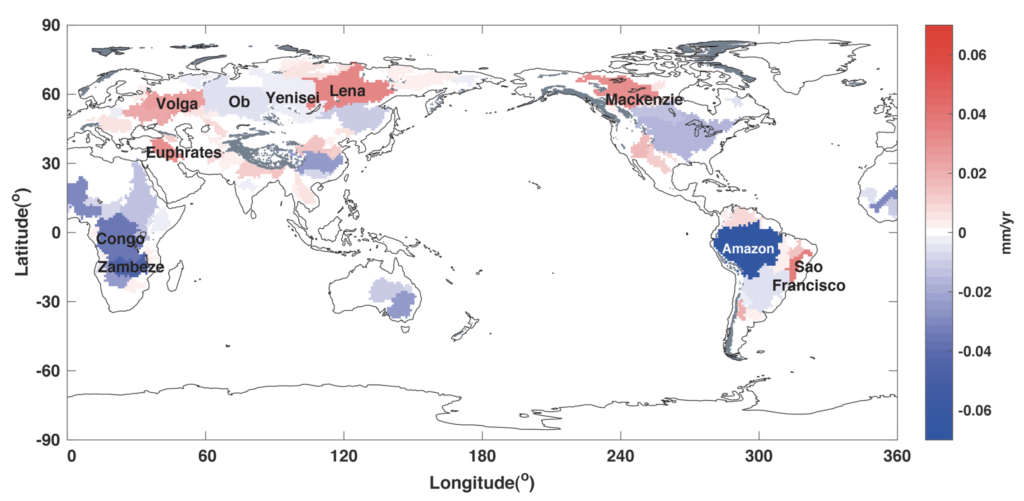Researchers at the Seoul National University and UT Center for Space Research published a new joint study in the Geophysical Research Letters (https://agupubs.onlinelibrary.wiley.com/doi/full/10.1029/2019GL085470). This study was led by Jae-Seung Kim, a graduate student of Dr. Ki-Weon Seo who has been a visiting scientist at UT CSR for the past year. During the last decade, the rate of global mean sea level (GMSL) rise is estimated to be about 3.5 mm/year based on satellite altimeter observations. Ocean volume increase due to thermal expansion has contributed to the GMSL rise by about 1.3 mm/year. Recent estimates of terrestrial water and ice melt inflow to the oceans can explain about 1.8 mm/year, so the sum of ocean mass and volume increase (3.1 mm/year) does not explain the total observed GMSL rise (3.5 mm/year). The missing contribution to GMSL rise, about 0.4 mm/year, is a significant water volume, similar in size to the contribution from melting Antarctic ice. In this study, the authors show that loss of water stored on land accounts for most of the missing contribution to GMSL rise (about 0.3 mm/year). Previous land water storage estimates using satellite gravity data were flawed due to various limitations, which are corrected in this study.

